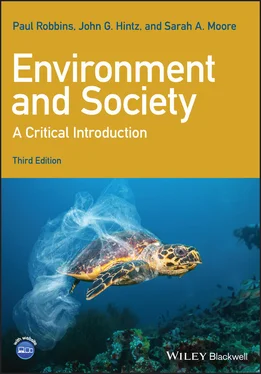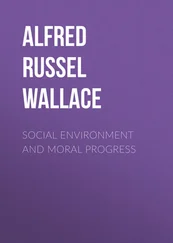What is the benefit from this extra cost? Why are “green” alternatives more expensive to produce? Where does the extra money spent on each product go? How would you know? Where would you go to find out?
Exercise 3.2 Marketing Green Technology
In this exercise, you will identify a “green” innovation or new technology and consider ways to market it. First, name and describe an environmentally desirable technology or process that might be used on campus or by your friends or classmates. These might include devices like reduced-flow showerheads or efficient light bulbs, or it might entail a product that changes how people do things, like freely available shared bicycles. Next, consider how much this alternative might cost relative to current technologies or available alternatives. Is it a great deal more expensive or inconvenient? Why is this? Finally, develop a convincing marketing strategy for this product, which might include short text, photos, slogans, catchphrases, or even a jingle. This will necessarily include some information to prove that your innovation is actually an environmental improvement over the status quo. What would actually make such an alternative compelling, especially if it is more expensive?
Exercise 3.3 Thinking Economically
Imagine a scenic canyon, visited by many local people as well as tourists from beyond the local area. Consider a scenario in which a mining company has proposed to the local authority that it be closed to the public and put into the production of coal. Thinking in terms of economics as a way of adjudicating the relative value of one use of the canyon over the other, what would you need to know in order to make a comparison or assessment? What kinds of quantitative data would inform your decision, and where might they come from? What kinds of things might you need to know that are hard to measure? Once you have listed the kinds of information and data that might be available to inform this decision, do you think it would be sufficient to making this decision, why or why not?
1 Beder, S. (1996). Charging the earth: the promotion of price-based measures for pollution control. Ecological Economics 16 (1): 51–63.
2 Coase, R.H. (1960). The problem of social cost. Journal of Law and Economics 3 (October): 1–44.
3 Ehrlich, P.R. (1968). The Population Bomb. New York: Ballantine Books.
4 Field, B.C. (2005). Natural Resource Economics: An Introduction. Long Grove, IL: Waveland Press.
5 Harvey, D. (1996). Justice, Nature, and the Geography of Difference. Cambridge, MA: Blackwell.
6 Rees, J. (1990). Natural Resources: Allocation, Economics, and Policy. New York: Routledge.
7 Robertson, M.M. (2006). The nature that capital can see: science, state, and market in the commodification of ecosystem services. Environment and Planning D: Society and Space 24 (3): 367–387.
8 Sabin, P. (2013). The Bet: Paul Ehrlich, Julian Simon, and Our Gamble over Earth’s Future. New Haven, CT: Yale University Press.
9 Simon, J.L. (1980). Resources, population, environment: an oversupply of false bad news. Science 208 (4451): 1431–1437.
10 TerraChoice Environmental Marketing Inc. (2007). The Six Sins of Greenwashing: A Study of Environmental Claims in North American Consumer Markets. Reading, PA: Author.
11 Tierney, J. (1990). Betting on the planet. The New York Times, December 2, pp. 52–53, 76–81.
1 Crook, C. and Clapp, R.A. (1998). Is market-oriented forest conservation a contradiction in terms? Environmental Conservation 25 (2): 131–145.
2 Field, B.C. (2001). Natural Resource Economics: An Introduction. Long Grove, IL: Waveland Press.
3 Godal, O., Ermoliev, Y., Klaassen, G. et al. (2003). Carbon trading with imperfectly observable emissions. Environmental and Resource Economics 25 (2): 151–169.
4 Johnson, E. and Heinen, R. (2004). Carbon trading: time for industry involvement. Environment International 30 (2): 279–288.
5 Randall, A. (1983). The problem of market failure. Natural Resources Journal 23: 131–148.
6 Rees, J. (1990). Natural Resources: Allocation, Economics, and Policy. New York: Routledge.
7 Robertson, M.M. (2006). Emerging ecosystem service markets: trends in a decade of entrepreneurial wetland banking. Frontiers in Ecology and the Environment 4 (6): 297–302.
8 Sen, A.K. (2001). Development as Freedom. Oxford: Oxford University Press.
9 Taylor, P.L., Murray, D.L., and Reynolds, L.T. (2005). Keeping trade fair: governance challenges in the fair trade coffee initiative. Sustainable Development 13 (3): 199–208.
4 Institutions and “The Commons”
Keywords
Common property
Game theory Institutions
Prisoner’s Dilemma.

Source : iko/Shutterstock.
Controlling Carbon?
The Prisoner’s Dilemma
The Tragedy of the Commons
The Evidence and Logic of Collective Action
Crafting Sustainable Environmental Institutions
Are All Commoners Equal? Does Scale Matter?
Thinking with Institutions
There is a growing consensus on the science of climate change and the urgency of the problem. According to the Intergovernmental Panel on Climate Change, whose job it is to vet the science surrounding global warming, global temperatures are rising, sea-level rise is expected, water availability may be impeded, and extreme weather events are likely to become more common and more severe. These changes will be felt unevenly but no country will be immune to such effects.
Given the widespread and severe nature of the problem, why are global carbon emissions so hard to control? One might think of many good reasons for this to be true. People tend to ignore problems they cannot see, governments are under the influence of oil companies, and so on.
One compelling argument holds that the root of the problem is that carbon quite simply does not stay put . With every combustion event (driving a car, burning a log, firing a coal plant for electricity, etc.) the carbon that is released quickly finds its way into the atmosphere. Carbon released in one country is – instantly – a burden shared by all countries. From the point of view of any individual country, moreover, carbon reductions are not “free,” since they require creating new rules, potentially reducing or redirecting economic production. A “carbon-reduced” product – whether a car, computer, or vegetable – may be more difficult to produce than its “status quo” counterpart. If such a product is more expensive as a result, it may not be competitive on a global market, especially if it must compete against products produced where carbon reductions have not been imposed. Many governments, including that of the United States, therefore express fear that if they make sacrifices in this direction while others do not, they will no longer be competitive. The benefits of carbon reduction, in a parallel way, would be experienced by all countries, but must be paid for by individual countries.
For many environmental problems, costs are often borne collectively, while benefits accrue to individuals; on the other hand, individual costs may lead to collective benefits. Nations must cooperate where there is no “super-government” to impose environmental laws and where there are few or no punitive measures for not cooperating. Such mismatches mean that hoping for spontaneous global action on climate change might be unrealistic. Arguably, some kind of rules and trust must be established to cooperate when incentives constantly lure people and states to follow their own self-interest … toward collective planetary ruin. In this chapter, we address this persistent and vexing problem: How, if at all, can rules and norms of global behavior be fashioned to encourage shared costs and collective benefits? At what scale is cooperation possible?
Читать дальше












